The rocky reef fishes of Vermelha Beach, a marine-estuarine transitional zone at Guanabara Bay, Brazil
DOI: https://doi.org/10.3856/vol45-issue1-fulltext-4
Abstract
Rocky reefs are one of the most important biotopes in Guanabara Bay due to their broad distribution and high species diversity. This study aimed to describe the composition and structure of the fish assemblage associated with rocky reefs in Vermelha Beach (RJ/Brazil), an estuarine-marine transitional zone located at the entrance of Guanabara Bay. Fish were surveyed through underwater visual censuses, conducted by snorkeling divers along 10 m2 -linear transects (n = 90). A total of 2.487 fishes were recorded belonging to 29 species in 18 families. Except for Atherinella brasiliensis, all other species are intimately associated with rocky reefs. The present work also stresses the importance of further studies to evaluate the role of periodic influences of estuarine and oceanic waters as structuring factors of the fish assemblages associated with rocky reefs at Vermelha Beach and similar ecosystems.


